Blogs
Practical Insights & Latest Happenings
Don’t miss out on the latest trends and info on SEO, search engines, social media, and more.
January 3, 2024
mothasim
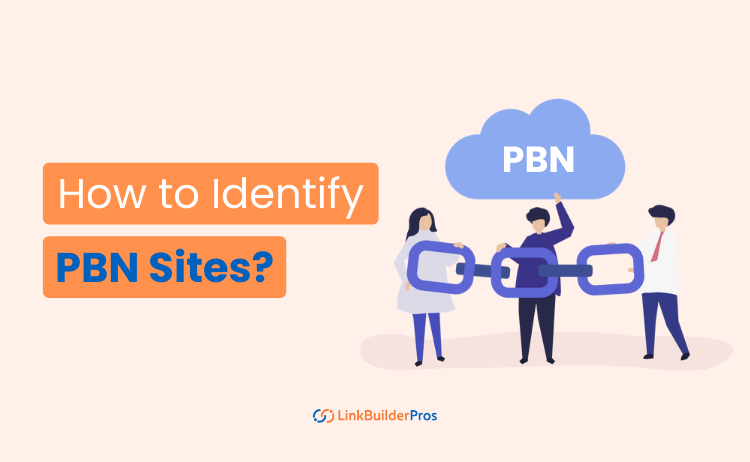
Private Blog Networks are a group of websites that link to each other to boost their rankings. While these websites often appear normal at first glance, they’re usually owned by the same person.
Although this manipulative black-hat SEO tactic worked in the past, Google learned how to identify and penalize them over the years. If you want to avoid PBNs when crafting and implementing your SEO strategy, first you have to know how to identify PBN sites.
We are here to guide you throughout the whole process with step-by-step instructions. You won’t even need in-depth SEO knowledge to make use of this guide.
A private blog network or PBN is a group of websites owned by an individual or an organization. The websites within the network are usually of high authority and exchange backlinks with each other.
Usually, the owner supervises the process in a way that backlinks are always directed to a specific website. The goal is to create a strong backlink profile for the main site and maintain a high domain authority score for the others.
PBN is usually considered a black-hat link building strategy because of this manipulative approach. Google and other search engines consider PBN as spammy and might de-index all the websites involved in the network when detected.
However, although the penalty is serious, many webmasters still manage to get away. They keep manipulating their link building activities right under Google’s nose with some shady tactics in play.
While it takes Google some time to identify PBN networks, there are ways for you to detect them if you know how to do it.
Before we get into the discussion of how you can identify a PBN site, let’s see why Google doesn’t give any credibility to links coming from a PBN.
Google has a specific guideline in place for all webmasters to follow when trying to make it in the SERP.
PBN contradicts with Google policies since the links are unnaturally provided to a single website in bulk. Although it’s hard to notice since many different websites are involved, Google can detect them even if it takes some time.
One of the ways a PBN gets exposed is when Google starts indexing the links and comes across ‘thin content’ or content that adds little to no value to the link.
It’s not possible to deliver quality content from every website of the PBN when its sole purpose is only to place links anyhow.
This is a weakness of the network that Google explores and if detected, penalizes the websites for.
To avoid the risk of getting links from PBN, you should be able to spot a PBN site when you see one.
Although webmasters now run PBN in a more sophisticated way to escape search engine spam algorithms, there are still some loopholes you can figure out yourself.
All the websites in the PBN are most likely to be hosted by a single IP address.
This makes it easier for you to decide if a site belongs to a PBN.
There are tools you can use to find out the IP addresses of a website, such as –
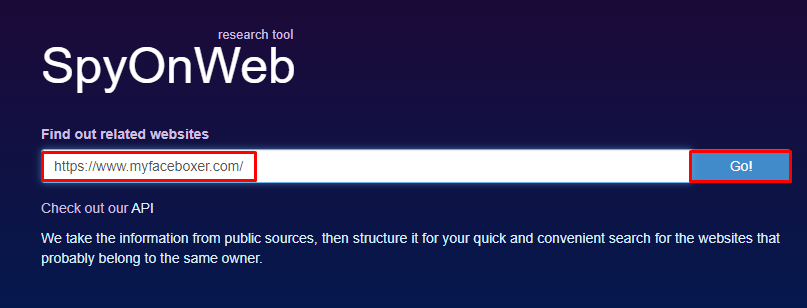
It’s normal for different types of websites to share a single IP address. However, when you find several websites with similar content hosted by the same address, then something is fishy!
WhoIs information reveals the primary information and contact details of the owner of a website. When you have a set of websites you think are PBN, find their WhoIs information for a clue. If they are PBN, the WhoIs information of the owner will be the same for all.
You can directly navigate to the WhoIs info with SpyOnWeb.

Analyze and compare all the suspicious websites to see if they come from the same owner or not.
Sometimes, you may find the information hidden or secured. This is just another indicator for a PBN because there is no reason for a webmaster to encrypt his information unless they are involved in spammy practices. So, think twice before connecting with that website.
Needless to mention – you shouldn’t consider getting backlinks from websites with lower DA or DR, say less than 25!
However, the problem is that PBN nowadays includes sites with higher authority to maintain the credibility of the backlinks going to its main site.
The webmasters usually make it happen by purchasing expired domains. This is a foolproof way to go about it since expired domains already offer a decent authority. A PBN leverages this domain authority to manipulate its link building campaign.
You can still figure out if a high authority site is PBN or not by looking at a couple of the other metrics, for example – despite their high DA, they usually have
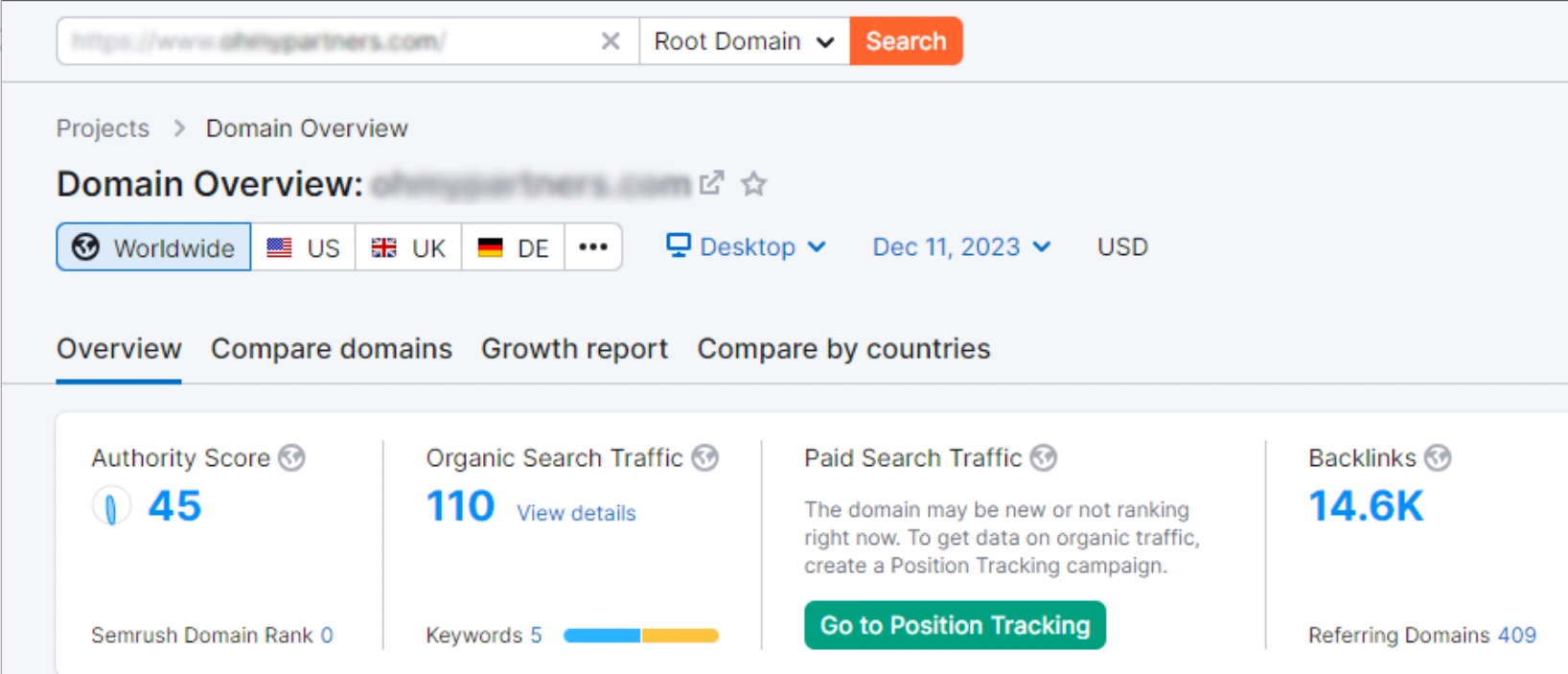
This is the domain overview of a random website in the SEO tool – SEMRush. You can see how despite a good enough authority score, the site has terrible traffic. This is only possible when the site is PBN!
Sometimes, the result will not look this obvious.
If you are confused about it, you can go back to the basics and try to find out the domain history.
The Way Back Machine is a great tool for this purpose. You can look at the statistics of the expired domain by calendar years, content history, page URLs, and so on.

If you notice that the site has been redesigned with totally unrelated content, then that’s a strong sign of PBN.
Also, if you can be sure that several expired sites have been redesigned like this right around the same time, then they are without a doubt, a part of the PBN.
When you analyze the backlink profile of a site, you should always look out for the red flags – in this case, links from or to PBN.
Let’s look at some of the unusual scenarios you might come across during a backlink analysis of a PBN site –
Well, too many external links are not by any means a bad thing. However, the way you get them makes a difference.
Take PBNs for example. As we have mentioned, PBN owners buy off expired domains and reuse them with their own content.
But they don’t actually bother that much about clearing up the site’s previous backlink profile – which would be a tremendous task in itself.
So, if you are navigating a PBN site, you’ll most likely notice a high number of external links and if you date back to the earliest of time, you’ll see loads of them are completely unrelated to your niche.
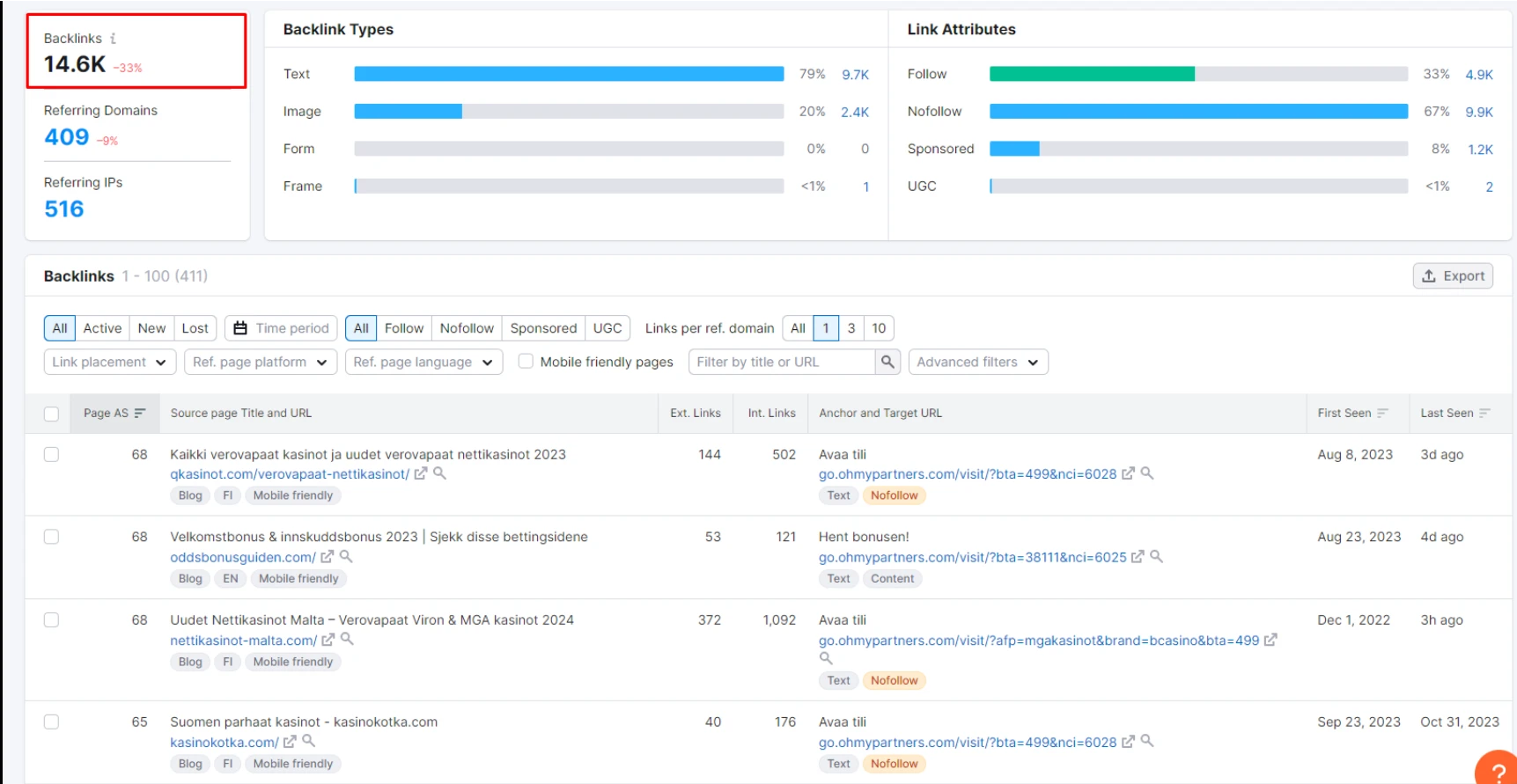
As said before, PBN owners are so in a hurry to build new backlinks that they don’t even care about the dead links from the existing backlink profile of an expired domain.
It’s true that a high number of broken links doesn’t automatically mean a site is from PBN. However, you have to take a good look at the links and how relevant they are.
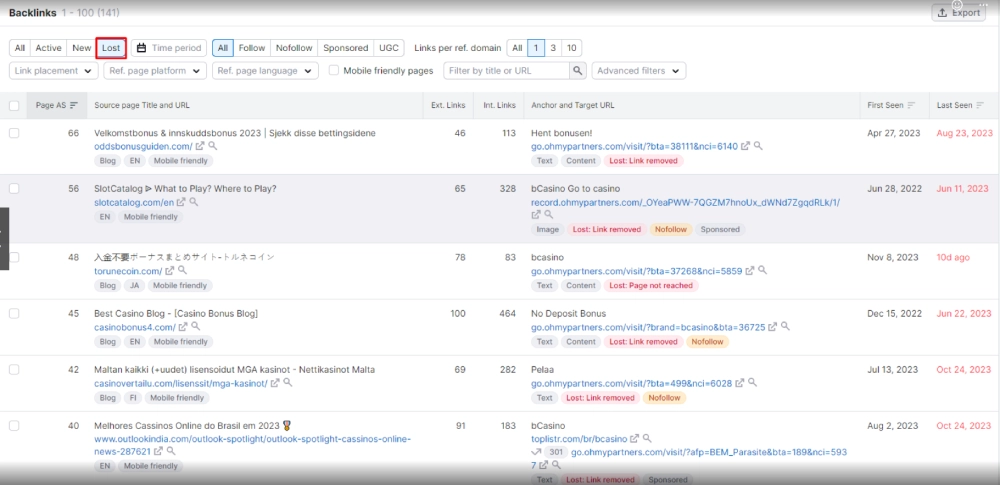
So, broken links can be a good marker to detect PBN as well if you keep your eyes open.
Many websites like those of magazines, restaurants, online bookshops, e-commerce platforms, and directories often display a different brand on their homepage as part of their advertisement or sponsorship campaign.
That’s not what we are talking about here.
We are talking about links placed randomly on the homepage or embedded in one of the sections of the homepage (e.g. the sidebar, banner, image) with no relation to the business most of the time.
You should be careful about this type of website design. We’ll discuss more about spammy web designs later.
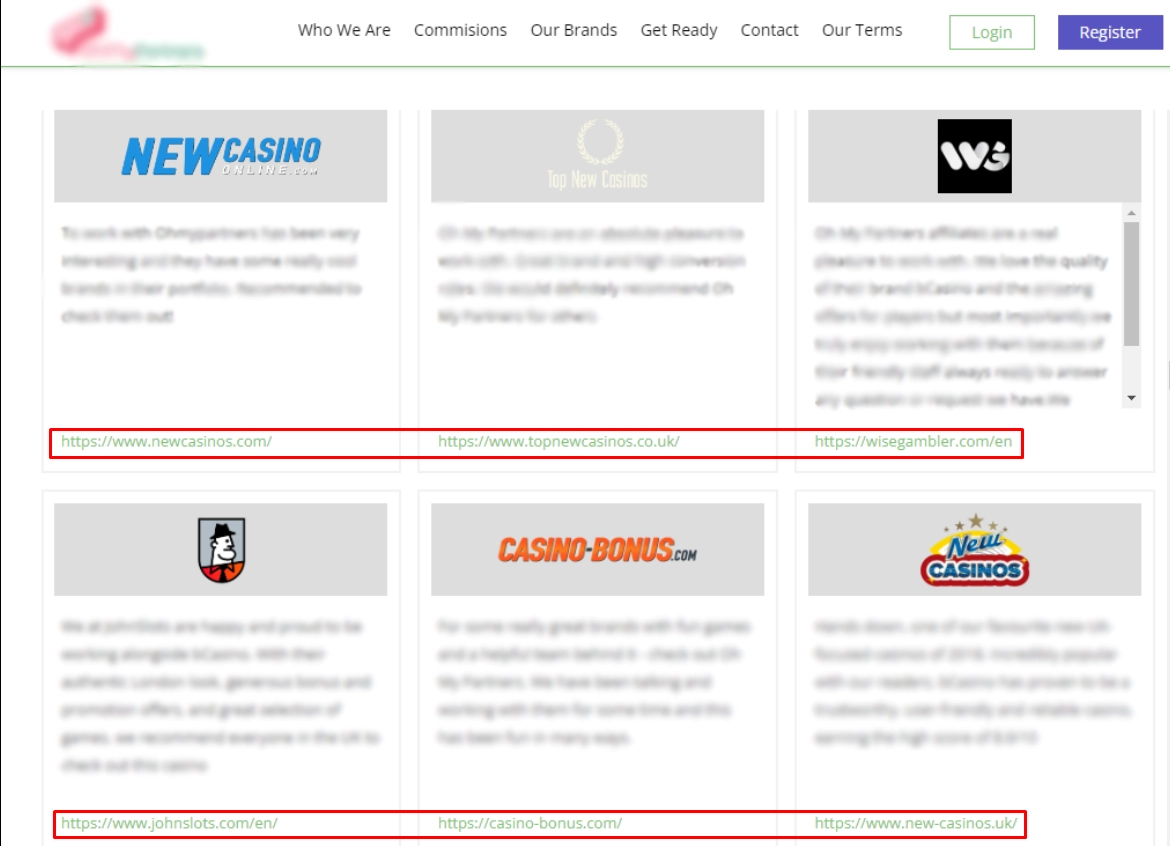
In this part of learning how to identify PBN sites, you should know that there is another hint you can take is the unnatural ratio of backlinks and referring domains in a PBN. If too many backlinks are coming from a single domain, then you are allowed to doubt the site to be in PBN.
However, that’s not necessarily the case every time. In order to be absolutely sure, you need to look at a couple of things –
After checking these criteria, you are done with your backlink analysis and can decide if the site you chose is a PBN or not.

All these domains here have one thing in common – low authority score but an unusual amount of inbound links going to the website. When you find websites with an authority score of 2 building 12M backlinks for a single website, you get why that site is a no-go!
It’s common to see a lot of the backlinks in a domain coming from Web 2.0 blogging sites like WordPress, Blogspot, Substack, Medium, and so on.
The reason Web 2.0 has become so popular is because it’s easy to use, free of cost for hosting, and user-friendly.
It looks like the PBN owners feel the same way!
A lot of Web 2.0 PBNs are now spreading out because of this and they are easily linking out to clients without any care for relevance or context of the link.
That’s actually a good news for you by the way! Now, you can differentiate between the natural and the spammy by simply looking at the contextual placement of the link.
Remember that high authority sites already receive links from blogs and Google sites naturally for their quality content. You don’t need to take up spamming techniques to make it happen.
Still, if that happens, now you know how to filter them out as PBN.
Usually, anchor texts should be a healthy mix of primary keywords, related queries, and LSI. But that’s for those who wish to build their links as genuinely as possible – like you and me
On the other hand, a PBN site is determined to get backlinks no matter how. So, the SEO managers there hardly care about the right proportion.
Their target is to rank on the SERP and make it quick and easy. To do so, they keep repeating the main keyword within the anchor text. The idea is to rank for that particular keyword and pass domain authority to the link. As a result, the anchor text density increases in a post.
This much stuffing sticks out as an unnatural style when writing the anchor text. That’s why, it is easily noticeable.
Whenever you see the same anchor text coming up over and over again, stop right there and discard that site as a whole no matter why you were looking into its backlink profile.
PBN managers have only gotten smarter with time. So, you may be a little disappointed if you can’t figure out anything using SEO tools and software.
You can still go manual and try to understand what makes a site one of PBN.
The content strategy of the site is a good start for that.
A PBN content shows some definite symptoms that you should notice. For instance –
We have already mentioned the concept of thin or valueless content that most PBN sites create. Just get the quality of the content evaluated by an expert and you’ll see why the site is spammy right away.
To get quick results, PBN sites often resort to copy-pasting content from other sources. Just use a free plagiarism checker tool to find out.
The constant rise of AI software has made it easier for content creators to write content effortlessly.
In the case of PBN, the amount of AI-written content is much higher. You’ll find their quality too good to be written by the same people that wrote some of the other content on the site.
Just look at the weird word choices and too generalized information within the content. If you still can’t realize it, have a handy AI checker tool do the work for you.
Sometimes, you’ll be reading a blog that keeps ringing a bell in your head – meaning you have read that blog before. PBN has to make quick work of the projects so they get easy backlinks with high authority. So, when they are not plagiarizing, they are usually rewriting content from other sites.
Again, focus on the words that don’t go with the content in the least bit. They usually stick out like sore thumbs in a PBN content, so you won’t have a problem finding them.
Go through a few pages of content. If the site belongs to a PBN, you’ll see that nothing makes any sense when it comes to topical relevance.
PBN puts less effort into structuring the content and more in spamming their way to get more backlinks. So, when you notice inconsistent and irrelevant information sprinkled throughout a content, it’s better to stand clear of it.
If you are analyzing several suspected PBN websites and their content, try to compare and see if you find similarities in the style they are written. There is another possibility that you’ll see the same image files used in the same context on all of them.
Usually, a PBN makes use of a relatively low number of content with a high keyword and anchor text density. So, when both the quality and the quantity of content are down, there is no point in going forward with that site anymore.
Since PBN has low organic traffic, you can tell that the sites of PBN are not likely to rank for keywords. However, that’s not the case.
The ultimate goal of a PBN site is to rank on the SERP by receiving inbound links from high-authority sites and getting noticed. So, they do target keywords to rank but not necessarily the relevant ones.
As you sift through their list of keywords, you’ll see only a few keywords ranking at the top and almost none of them with any connection to the corresponding niche.
A simple look at the entire site from top to bottom can also reveal its true identity. Let’s look at some of the aspects of a web design that might help you recognize a PBN –
In this “how to identify PBN sites” guide, we’ve already talked about how a homepage looks like in PBNs. Look out for the same signs on other pages as well.
See if they have gotten links at random places on the site (footers, headers, visuals) that don’t make any sense to you.
When going through several websites, keep your eyes on the technical side of things too.
Compare the structures; i.e., the platforms used to build the sites, such as WordPress and the HTML makeup.
If all the domains were built the same way – in the same style and based on the same Javascript, codes, and plugins, then you should start seeing a connection here that makes you think how they are a part of the same PBN.
Generally, a low authority website shouldn’t be able to get links through guest blogging but the PBN sites make it look easy with some tricky strategies in place.
They loosen up the guest posting guidelines a little bit and welcome blogs from many different sites in the niche.
This has a two-fold advantage for them. For one, they get decent content without any hassle. Also, when new authoritative blogs start writing for them, they become a part of the PBN as well.
This is a way to build their authority and trap new sites in their network without drawing any attention. Rather, they start looking generous with a free ‘sign up’ option and guest blogging opportunities.
How do you pinpoint them?
Look out for any ‘sign up’, guest posting, or register page. Analyze the page traffic and find out how they operate.


You can also look at the content itself for some ideas. Guest posts like this are usually not that serious! What we mean is that you’ll notice the links are not contextually placed since there’s little to no supervision from the webmasters. That’s because, again, they have no time for healthy SEO! Their goal is to publish a couple of content from some good writers and keep the site active to avoid any risk of getting flagged.
You may have noticed that we never mentioned the name of any PBN site in this blog. When we had to give you some practical examples to learn from through images, we blurred the domain names out.
That’s because even though you are not linking to a site, mentions and citations can also pass authority. A credible white-hat link building company will never promote any link schemes or practitioners like a PBN or a link farm. You shouldn’t either!
Invest time and money in white-label link-building practices instead. We recommend building genuine relationships with trusted businesses and websites. Even if you’re paying for one of the link building campaigns, make sure the service providers are miles off from black-hat strategies and the quality of your backlinks is worth the price.
Filter out your prospects before the outreach and eliminate the possibility of contacting any PBN in the process.
However, sometimes PBN sites may contact you on their own. In that case, don’t get too excited and sign up for it in a cheaper deal. Take your time to size the website up and make an educated decision.
If you were hit by Google although you were not supposed to, there’s a high chance the reason is PBN.
Yes, you might be a part of the PBN without even knowing it in the first place. PBN experts have developed a way to catch you in the net.
In fact, they have almost adapted to the growing challenges and made it difficult for us to point out a PBN from billions of sites on the World Wide Web.
While a little difficult, it’s still possible for you to learn how to identify PBN sites if you can keep yourself on your toes when it comes to choosing a website to partner up with.
The most obvious is when you see the layout of the website, its bloated metrics, and its common IP address.
You can take it up a notch with backlink analysis and checking the content strategy of the site to do the job more confidently.
If you decide to go with a link building agency, make sure they don’t link you with a PBN site. Obviously, no reputable link building agency will do such a thing. So, make sure you can trust the company you are assigning your link building or SEO tasks to.
Contact LinkBuilderPros for a trusted link building campaign for your website. We guarantee that our expert hands and years of experience will ensure that no spammy link ever comes close to your site!
Q. Can I report PBNs to search engines?
Ans. Yes, search engines usually view PBNs as a link scheme tactic and penalize them for it. You can use tools like Google Disavow tool to neutralize a PBN site with the intervention of Google itself.
Q. Can PBNs mimic genuine websites?
Ans. It’s possible for PBNs to mirror genuine websites, yes. However, they can imitate original sites in terms of the site structure and backlinks by mere manipulation. Most of the time, they lag behind with low user engagement, organic and referral traffic, almost zero social media activity, and so on.
Q. Are all multiple-site link networks PBNs?
Ans. Not necessarily. Many reputable businesses offer multiple domains with quality and interlinking